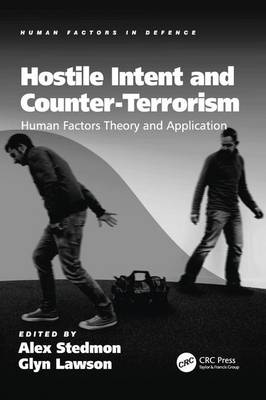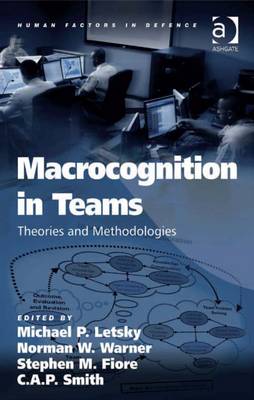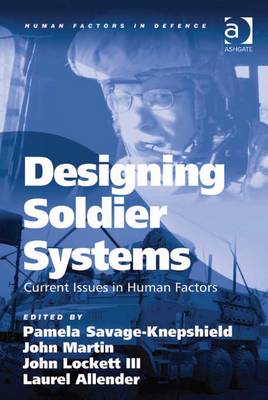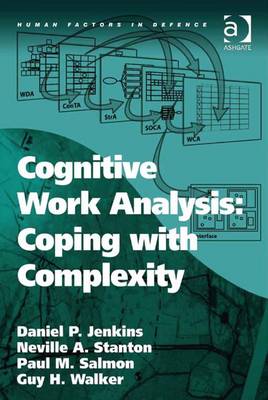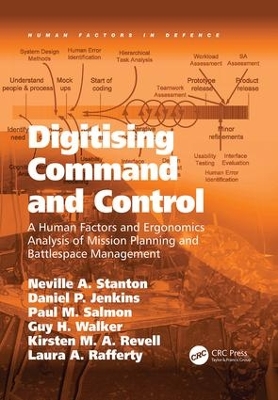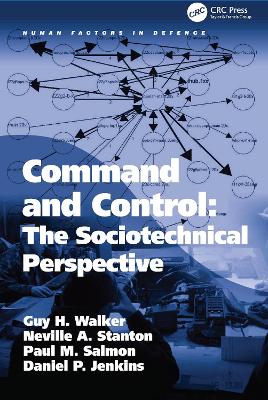Human Factors in Defence
11 total works
Hostile Intent and Counter-Terrorism
Macrocognition in Teams
Team collaboration involves many operational tasks such as team decision-making or course of action selection, developing shared understanding, and intelligence analysis. These operational tasks must be performed in many situations, often under severe time pressure, with information and knowledge uncertainty, large amounts of dynamic information and across different team characteristics.
Recent research in this area has focused on various aspects of human collaborative decision-making and the underlying cognitive processes while describing those processes at different levels of detail, making it difficult to compare research results. The theoretical construct of `macrocognition in teams’ was developed to facilitate cognitive research in team collaboration, which will enable a common level of understanding when defining, measuring and discussing the cognitive processes in team collaboration. Macrocognition is defined as both the internalized and externalized mental processes employed by team members in complex, one-of-a-kind, collaborative problem solving.
Macrocognition in Teams provides readers with a greater understanding of the macrocognitive processes which support collaborative team activity, showcasing current research, theories, methodologies and tools. It will be of direct relevance to academics, researchers and practitioners interested in group/team interaction, performance, development and training.
Designing Soldier Systems
This book focuses on contemporary human factors issues within the design of soldier systems and describes how they are currently being investigated and addressed by the U.S. Army to enhance soldier performance and effectiveness.
Designing Soldier Systems approaches human factors issues from three main perspectives. In the first section, Chapters 1-5 focus on complexity introduced by technology, its impact on human performance, and how issues are being addressed to reduce cognitive workload. In the second section, Chapters 6-10 concentrate on obstacles imposed by operational and environmental conditions on the battlefield and how they are being mitigated through the use of technology. The third section, Chapters 11-21, is dedicated to system design and evaluation including the tools, techniques and technologies used by researchers who design soldier systems to overcome human physical and cognitive performance limitations as well as the obstacles imposed by environmental and operations conditions that are encountered by soldiers.
The book will appeal to an international multidisciplinary audience interested in the design and development of systems for military use, including defense contractors, program management offices, human factors engineers, human system integrators, system engineers, and computer scientists. Relevant programs of study include those in human factors, cognitive science, neuroscience, neuroergonomics, psychology, training and education, and engineering.
Flying Fast Jets
by David G. Newman, Professor Don Harris, Dr. Eduardo Salas, and Professor Neville A. Stanton
This book provides a detailed general overview of the human factors and performance limitations associated with flying fast jets, integrating all the latest available research literature on the demanding operational tasks faced by such pilots and aircrews. As such, it has a strong military focus, dealing with pilots of fighter aircraft, attack aircraft and lead-in fighter trainer aircraft that are traditionally only single or dual pilot operations. The book deals not only with the issue of G force, but discusses ejection and escape/survival, disorientation, high altitude physiology, pilot training and selection, helmet-mounted equipment, situational awareness, data fusion and multi-sensor integration, human machine interface issues and advanced cockpit design. It examines the human performance issues associated with the technological advances made in fast jets, such as increased manoeuvrability, increased use of the pilot's head as a mounting platform for sensor and weapons systems, and the complexities involved in the human-machine interface within these aircraft.
The Human Factors of Fratricide
by Laura A Rafferty, Neville A. Stanton, and Guy H. Walker
Fratricide has been defined as firing on your own forces, when mistaking them for enemy forces, which results in injury or death. Rates of fratricide incidence have been steadily increasing and the complexity of the contemporary operating environment may lead to a continuation of this trend. Although the majority of research into fratricide has focused on the development of technological decision aids, recent explorations highlight the need to emphasise the social aspects within a socio-technical framework.
This book presents and validates, via the use of case studies, a model of teamwork and decision-making factors that are associated with incidents of fratricide. In summary, it offers a review and evaluation of contemporary theoretical perspectives on teamwork and fratricide, as well as a range of accident analysis approaches. A novel theory of fratricide is then presented followed by a new methodology for assessing fratricide. Naturalistic case studies of teams are undertaken in the military domain. These studies illustrate the approach and offer early validation evidence. In closing, the book presents a series of principles designed to reduce the likelihood of fratricide in the future.
Modelling Command and Control
by Professor Don Harris, Professor Neville A. Stanton, and Chris Baber
Since its inception, just after the Second World War, Human Factors research has paid special attention to the issues surrounding human control of systems. Command and control environments continue to represent a challenging domain for human factors research. Modelling Command and Control takes a broad view of command and control research, to include C2 (command and control), C3 (command, control and communication), and C4 (command, control, communication and computers) as well as human supervisory control paradigms. The book presents case studies in diverse military applications (for example, land, sea and air) of command and control.
The book explores the differences and similarities in the land, sea and air domains; the theoretical and methodological developments, approaches to system and interface design, and the workload and situation awareness issues involved. It places the role of humans as central and distinct from other aspects of the system. Using extensive case study material, Modelling Command and Control demonstrates how the social and technical domains interact, and why each require equal treatment and importance in the future.
Distributed Situation Awareness
by Paul M. Salmon, Neville Stanton, and Guy H Walker Jenkins
Having an accurate understanding of what is going on is a key commodity for teams working within military systems. 'Situation awareness' (SA) is the term that is used within human factors circles to describe the level of awareness that operators have of the situation that they are engaged in; it focuses on how operators develop and maintain a sufficient understanding of 'what is going on' in order to achieve success in task performance. Over the past two decades, the construct has become a fundamental theme within the areas of system design and evaluation and has received considerable attention from the human factors research community. Despite this, there is still considerable debate over how SA operates in complex collaborative systems and how SA achievement and maintenance is best supported through system, procedure and interface design.
This book focuses on the recently developed concept of distributed situation awareness, which takes a systems perspective on the concept and moves the focus on situation awareness out of the heads of individual operators and on to the overall joint cognitive system consisting of human and technological agents. Situation awareness is viewed as an emergent property of collaborative systems, something that resides in the interaction between elements of the system and not in the heads of individual operators working in that system.
The first part of the book presents a comprehensive review and critique of existing SA theory and measurement approaches, following which a novel model for complex collaborative systems, the distributed SA model, and a new modelling procedure, the propositional network approach, are outlined and demonstrated. The next part focuses on real-world applications of the model and modelling procedure, and presents four case studies undertaken in the land warfare, multinational warfare and energy distribution domains. Each case study is described in terms of the domain in question, the methodology employed, and the findings derived in relation to situation awareness theory. The third and final part of the book then concentrates on theoretical development, and uses the academic literature and the findings from the case study applications to validate and extend the distributed SA model described at the beginning of the book. In closing, the utility of the distributed SA model and modeling procedure are outlined and a series of initial guidelines for supporting distributed SA through system design are articulated.
Cognitive Work Analysis: Coping with Complexity
by Dr Daniel P. Jenkins, Professor Neville A. Stanton, Paul M. Salmon, and Guy H. Walker
'Complex sociotechnical systems' are systems made up of numerous interacting parts, both human and non-human, operating in dynamic, ambiguous and safety critical domains. Cognitive Work Analysis (CWA) is a structured framework specifically developed for considering the development and analysis of these complex socio-technical systems. Unlike many human factors approaches, CWA does not focus on how human-system interaction should proceed (normative modelling) or how human-system interaction currently works (descriptive modelling). Instead, through a focus on constraints, it develops a model of how work can be conducted within a given work domain, without explicitly identifying specific sequences of actions (formative modelling).
The framework leads the analyst to consider the environment the task takes place within, and the effect of the imposed constraints on the way work can be conducted. It provides guidance through the process of answering the questions of why the system exists, what activities can be conducted within the domain as well as how these activities can be achieved, and who can perform them.
The first part of the book contains a comprehensive description of CWA, introducing it to the uninitiated. It then presents a number of applications in complex military domains to explore and develop the benefits of CWA. Unlike much of the previous literature, particular attention is placed on exploring the CWA framework in its entirety. This holistic approach focuses on the system environment, the activity that takes place within it, the strategies used to conduct this activity, the way in which the constituent parts of the system (both human and non-human) interact and the behaviour required. Each stage of this analysis identifies the constraints governing the system; it is contended that through this holistic understanding of constraints, recommendations can be made for the design of system interaction; increasing the ability of users to cope with unanticipated, unexpected situations. This book discusses the applicability of the approach in system analysis, development and evaluation. It provides process to what was previously a loosely defined framework.
Performance Under Stress
The world is a dangerous place and recent events have served to make it less safe. There are many arenas of conflict and even combat across the world. Such situations are the quintessential expression of stress; you stand in imminent danger and live with the knowledge that you may be attacked, injured or even killed at any moment.
How do people perform under these conditions? How do they keep a heightened level of vigilance when nothing may happen in their immediate location for weeks or even months? What happens when the bullets actually start flying? How is it you distinguish friend from foe, and each from innocent bystanders when in immediate peril of your life? Can we design technology to help people make good decisions in these ultimately hazardous situations? To what degree does your membership in a team act to dissipate these particular effects? Can we generate sufficiently stressful field exercises to simulate these conditions and can we train and/or select those most able to withstand such adverse conditions? How will the next generation of servicemen deal with these inherent problems? These are the sorts of questions that Performance Under Stress addresses.
This book is derived largely from a multiple-year, multiple university initiative (MURI) on stress and soldier performance on the modern, electronic battlefield. It involved leading researchers from many institutions who have brought their individual expertise to bear on these crucial, contemporary concerns. United by a common research framework, these groups attacked the issue from different methodological and conceptual approaches, ranging from traditional laboratory modeling and experimentation, to realistic simulations; from involved field exercises to personal experiences of actual combat conditions. The insights generated have been distilled and presented as a benchmark of current understanding and provide future directions for research in this arena.
Although this work focuses on soldier stress and soldier performance, the principles that are derived extend well beyond this single application. Their findings can be applied to people facing the demands of the business world or research as much as to those who meet life or death situations, such as homeland security, first responders, and law enforcement personnel.
Digitising Command and Control
by Professor Neville A. Stanton, Dr Daniel P. Jenkins, Paul M. Salmon, Guy H. Walker, Kirsten M. A. Revell, and Dr. Laura A. Rafferty
